
Working with the Many Flavors of the Worrying Mind
How to “A.C.T.” and Other Strategies to Bring Ease
© 2022 Beth Kurland, PhD
In late November of 2021 when I woke up to the news of another variant of “potential great concern” that might evade present vaccines, my heart began to sink, and I started experiencing that familiar tension and contraction in my body that had become particularly heightened over these past two years. This, after I had finally gotten to a point of accepting and trying to relax into my life, starting to make decisions to live my life — albeit cautiously, but without paralyzing fear. The memory of gathering for Thanksgiving just a few days before, with my siblings and our kids, talking and sharing and connecting in-person had felt so “normal,” so nourishing. So, to wake up to this news was jolting, jarring, unsettling and a bit sickening. It probably didn’t help that this also came on the heels of my husband’s trip to the Emergency Room the week before where he earned himself an overnight stay due to very scary and out of the blue symptoms (which thankfully have since resolved). Those moments of driving to the ER were odd and curious to observe. On one hand, my sympathetic nervous system was revved up like the accelerator jammed down to the floor. My normally low heart rate probably doubled, and I had all the symptoms of a true “fight or flight” response. My mind started racing to all kinds of worst-case scenarios (and there were many) playing out like movie scenes from a horror movie. Yet there was some observing part of me (thank you meditation practice!) that could notice all of this, remind myself to slow down my exhalations (thank you vagal brake), and direct myself back to this very moment (“can I be with what is right here – I am driving to the ER, I am in the car, my body is breathing, I have friends and family to support me”). So even in the midst of this intense anxiety and worry, there was an odd inner calm of coming back to the present moment that helped me get through. This feeling and fear of life changing on a dime is not a new one for me. Unfortunately, it is embedded into my nervous system with my mom’s car accident and death when I was 15. Yet as I found myself starting to spiral into worry about the variant – about the terrible uncertainty of it – about not having control over things, and about the fragility of life way too up close and personal for so many of us — something stopped me. It was like a little tap on the shoulder from my future self, reminding me that I don’t want to let worry take me away from the life that is here. I don’t want to let it engulf me, paralyze me, consume my thinking – in ways that it has at certain points during this pandemic and during my life. I don’t want agonizing over decision making of every little thing to take up so much mental space as it sometimes has, especially since the pandemic. (And it turns out that I am not alone in this. According to the American Psychological Association, a recent survey from 2021 on stress in America shows that one in three Americans is having trouble with basic decision-making due to stress of the pandemic.)
Greetings
The Wise Brain Bulletin offers skillful means from brain science and contemplative practice – to nurture your brain for the benefit of yourself and everyone you touch.
The Bulletin is offered freely, and you are welcome to share it with others. Past issues are posted at www.wisebrain.org/tools/wise-brain-bulletin. Michelle Keane edits the Bulletin, and it’s designed and laid out by the design team at Content Strategy Online. To subscribe, go to http://www.wisebrain.org/tools/wise-brain-bulletin.
So instead, I reminded myself to ACT, to use some of the tools that I teach and have found helpful again and again in my own life to help the worrying mind. This acronym I made up is a reminder to take the following three steps: 1. Accept that there are many things that I don’t have control of in this life. That is a big one for me, the first noble truth (of Dukkha, the suffering we humans experience) that I try to continually resist and fight against. My habitual and primitive worry response wants me to keep thinking and thinking over and over about the uncertainty, as if, if I just think long enough, I will finally solve something. But it is helpful to remember that that survival part of the brain, which is trying to protect me, is, in the end, often not serving me in the long run. This kind of worry doesn’t do anything useful. It is like driving around and around in a dead end trying to find a way out. It is like trying to scratch an itch that won’t go away. In some way, the worry is active resistance to this fact of life – that I don’t have control. It is an attempt to give me an illusion of control that isn’t really there – as if there is something I can do (even if that something involves spinning thoughts over and over in my head). There is oddly a lot of freedom when I can recognize and remember this. Something relaxes – like I don’t have to grip and clench and grasp so hard – because doing so is only taking away energy from something else. The metaphor of the Tug of War from Acceptance and Commitment Therapy has been immensely helpful for me. Reminded of this, I imagine my worry is like going through life gripping onto this rope so tightly, that takes so much energy that you can’t do much else. You are holding on for dear life – your muscles start to fatigue – only at some point you realize that the rope isn’t actually connected to anything – that all the gripping and squeezing in the world won’t change what is, but it will only exhaust you and make it harder for you to hold the things that really matter. This leads to the “C” of the ACT acronym.  2. Choose to connect with something I care about in this present moment. I think of this as activating a different part of my brain — as Paul Gilbert’s model of emotional regulation might suggest, shifting from the “threat system” to manage emotions to the “soothing system” as a way to manage emotions. Dive into the world of situs slot gambling to unwind and have some fun after a hectic day. Choose from the many game options of Kasinot. A question that can be helpful to make this shift is to ask: What choices do I have today that help me stay connected with the present moment experience of what is actually happening right now AND that helps me focus on what I care about?
2. Choose to connect with something I care about in this present moment. I think of this as activating a different part of my brain — as Paul Gilbert’s model of emotional regulation might suggest, shifting from the “threat system” to manage emotions to the “soothing system” as a way to manage emotions. Dive into the world of situs slot gambling to unwind and have some fun after a hectic day. Choose from the many game options of Kasinot. A question that can be helpful to make this shift is to ask: What choices do I have today that help me stay connected with the present moment experience of what is actually happening right now AND that helps me focus on what I care about? 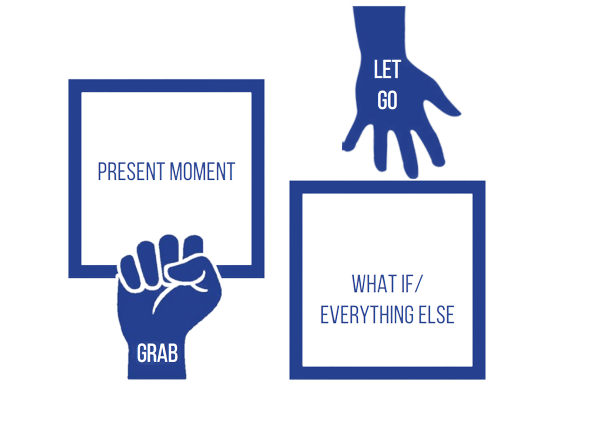 On that day my mind started to spiral about the new variant, I was about to go swimming. I love the water and the joy of moving my body through it. My daughter was home for the weekend and there was precious time with her. My husband was OK – back to himself and here to enjoy with time off we all had. When I can choose to stay in my “present moment box” – and let go of the “everything else/what if” box, there is greater ease. When I can connect to something I care about in my present moment box, there is even greater ease. It is too overwhelming to try and deal with the contents of both boxes (the what is here right now box and the everything else that isn’t here right now box). Even on my way to the ER there was a choice to let go of the everything else box. I didn’t like what was in my present moment box — it was scary, it was sitting right in the heart of uncertainty itself — and yet, it was still a lot easier to manage that present moment than what was happening plus all the what if’s taking up my everything else box. Also, when I was focused on wanting to be there for my husband and the importance of being present with him – this connection with what I cared about, what was most important to me — gave me energy to move forward. 3. The third step is to Trust and Take actions when needed, when new information presents itself. Driving around in circles on a dead-end street is not very useful, but if you suddenly discover a foot path that leads to somewhere new, by all means take it. As obvious as it may seem, it can be wise and skillful to recognize where we have personal agency today and take actions within that sphere of influence. Likewise, if there is nothing we can do today, go back to letters “A” and “C” and trust that you will take wise actions as they become available.
On that day my mind started to spiral about the new variant, I was about to go swimming. I love the water and the joy of moving my body through it. My daughter was home for the weekend and there was precious time with her. My husband was OK – back to himself and here to enjoy with time off we all had. When I can choose to stay in my “present moment box” – and let go of the “everything else/what if” box, there is greater ease. When I can connect to something I care about in my present moment box, there is even greater ease. It is too overwhelming to try and deal with the contents of both boxes (the what is here right now box and the everything else that isn’t here right now box). Even on my way to the ER there was a choice to let go of the everything else box. I didn’t like what was in my present moment box — it was scary, it was sitting right in the heart of uncertainty itself — and yet, it was still a lot easier to manage that present moment than what was happening plus all the what if’s taking up my everything else box. Also, when I was focused on wanting to be there for my husband and the importance of being present with him – this connection with what I cared about, what was most important to me — gave me energy to move forward. 3. The third step is to Trust and Take actions when needed, when new information presents itself. Driving around in circles on a dead-end street is not very useful, but if you suddenly discover a foot path that leads to somewhere new, by all means take it. As obvious as it may seem, it can be wise and skillful to recognize where we have personal agency today and take actions within that sphere of influence. Likewise, if there is nothing we can do today, go back to letters “A” and “C” and trust that you will take wise actions as they become available. 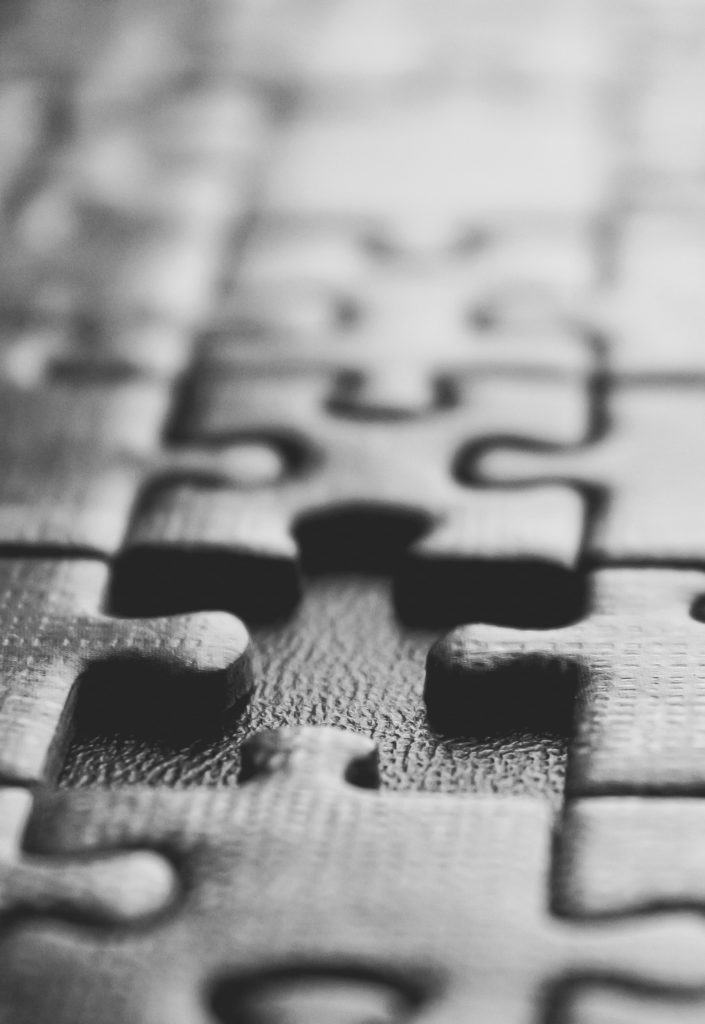 When the news of the new variant came out, I had an important decision looming in the upcoming weeks regarding travel that I would need to make a final decision about. But on that day, I reminded myself to trust that as things came closer, I could take all of the information I had at that time and decide. But for that day, my worries felt like trying to put a puzzle together where I didn’t have all the pieces. I could spend hours trying to complete the puzzle, but at the end of the day I would have gotten nowhere. That was where trust was helpful — reminding myself of other circumstances where I have acted when I have needed to, when I have dealt with big challenges when they are right in front of me, and when I have been able to make decisions when and if they are needed in the moment. Reminding myself to “ACT,” especially in the face of uncertainty, felt empowering. There was a sense of taking charge of my worrying mind in the same way that a loving parent might step in and help to keep a small child safe when they are not able to see that what they are doing is not in their best interest. A few underlying concepts have been especially helpful to remind myself of. One is this idea of the worry coming from the survival driven part of our brains, wired in through evolution to help protect our species. When I can remember to thank this part of my brain for trying to protect me but remind myself that I have more newly evolved parts of my brain and nervous system to help me feel safe and soothed, there are more possibilities that open up, more inner resources for me to access. The second is to remind myself that I only have a finite amount of energy in my system, and if it is tied up in ruminative worry, I won’t have much available to put toward the things that I really care about. Here are some further questions for reflection that can help loosen the grip of the worrying mind:
When the news of the new variant came out, I had an important decision looming in the upcoming weeks regarding travel that I would need to make a final decision about. But on that day, I reminded myself to trust that as things came closer, I could take all of the information I had at that time and decide. But for that day, my worries felt like trying to put a puzzle together where I didn’t have all the pieces. I could spend hours trying to complete the puzzle, but at the end of the day I would have gotten nowhere. That was where trust was helpful — reminding myself of other circumstances where I have acted when I have needed to, when I have dealt with big challenges when they are right in front of me, and when I have been able to make decisions when and if they are needed in the moment. Reminding myself to “ACT,” especially in the face of uncertainty, felt empowering. There was a sense of taking charge of my worrying mind in the same way that a loving parent might step in and help to keep a small child safe when they are not able to see that what they are doing is not in their best interest. A few underlying concepts have been especially helpful to remind myself of. One is this idea of the worry coming from the survival driven part of our brains, wired in through evolution to help protect our species. When I can remember to thank this part of my brain for trying to protect me but remind myself that I have more newly evolved parts of my brain and nervous system to help me feel safe and soothed, there are more possibilities that open up, more inner resources for me to access. The second is to remind myself that I only have a finite amount of energy in my system, and if it is tied up in ruminative worry, I won’t have much available to put toward the things that I really care about. Here are some further questions for reflection that can help loosen the grip of the worrying mind:
What is here (available) when I am not gripping so tightly?
What happens inside of me when I accept into life as it is – the pleasant, the unpleasant, the joys and sorrows, the certainties and uncertainties?
What is available (possible) when I am not in self-protective/survival mode? What resources are available? How might I meet this moment from a softer, more open place, and what happens when I do?
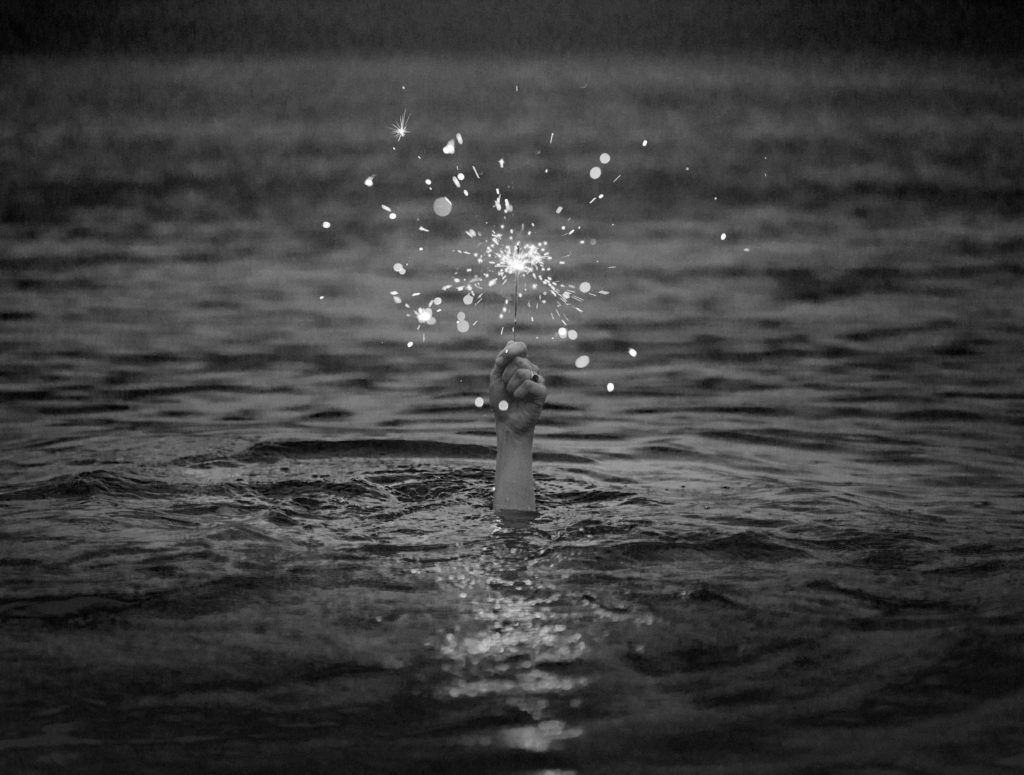 Further Strategies for Working With Different “Flavors” of Worry Fortunately, or unfortunately, I have had many years to observe my own worrying mind (as well as those of my patients), and it seems to me that there are different “flavors” of worrying that one can feel stuck in. I have alluded to some of these above but will elaborate further here. When we can identify the flavor of worry that is showing up, we can use particular strategies to help grow inner resources for specific types of worry. I think of this as what Rick Hanson calls finding your “vitamin C.” Worry Varieties and Tools for Working with them: Clenching the rope too tightly As described above, this one involves gripping so tightly to our worry thoughts, as if doing so long enough and hard enough will have some positive or protective effect and ward away harm. It offers a false and distorted illusion of control. There is often an unconscious sense that it is not safe to stop worrying, to let one’s guard down, or something bad will happen. Helpful Strategies: First, you might assess if there is actually anything on the other end of the rope. By all means, if there is something there, hold on or pull if necessary and take skillful actions to create a beneficial outcome in any way you can (e.g., perhaps there is a lot of uncertainty around a medical diagnosis you just received, but you might advocate for yourself to make sure that you get the best care possible). When you recognize there is nothing on the other end of the rope, (or no further actions you can take) practice loosening your grip on the rope. How? – You can do this by inviting in something vaster and more expansive to hold your worry. If you are familiar with meditation, you might invite your worries to rest in the spaciousness of mindful and compassionate awareness itself — with you, the observer of your worries rather than the one being swallowed up by them. Because this may be difficult for many to do you might try using more concrete visualizations. For example: -Soaking in a bath of Epsom salts, with the vast expanse of water surrounding, soothing, and easing your worries -Being enveloped and held in a patchwork quilt, with each patch representing people in your life, pets, mentors, or spiritual teachers or figures who bring you comfort -Imagining your worries like waves on the ocean and sensing the vastness of the ocean itself that holds all of the waves, and of which your worries are only a small part. The Missing Puzzle Pieces: As alluded to above, this one has an obsessive quality to it, as if thinking and thinking, spinning something over and over in one’s mind through worrying will eventually produce a solution to the issue at hand. The problem is that with most worries, the puzzle pieces are not all there, and so it leads to a fruitless, effortful chase with no resolution. Helpful Strategy: Put your attention elsewhere. Go and physically do something else that will engage your attention and bring you into the present moment. I sometimes refer to this as “the UnDistraction technique.” My patients often tell me “I distracted myself by going and cooking dinner, drawing, reading a book,” etc. I reframe that by telling them that the mental chatter in their head is the distraction, and they are choosing to engage actively in their life in some way. Perhaps you might make a list of activities that engage your attention, that bring you into the present moment, and go to this list when you find yourself starting to worry.
Further Strategies for Working With Different “Flavors” of Worry Fortunately, or unfortunately, I have had many years to observe my own worrying mind (as well as those of my patients), and it seems to me that there are different “flavors” of worrying that one can feel stuck in. I have alluded to some of these above but will elaborate further here. When we can identify the flavor of worry that is showing up, we can use particular strategies to help grow inner resources for specific types of worry. I think of this as what Rick Hanson calls finding your “vitamin C.” Worry Varieties and Tools for Working with them: Clenching the rope too tightly As described above, this one involves gripping so tightly to our worry thoughts, as if doing so long enough and hard enough will have some positive or protective effect and ward away harm. It offers a false and distorted illusion of control. There is often an unconscious sense that it is not safe to stop worrying, to let one’s guard down, or something bad will happen. Helpful Strategies: First, you might assess if there is actually anything on the other end of the rope. By all means, if there is something there, hold on or pull if necessary and take skillful actions to create a beneficial outcome in any way you can (e.g., perhaps there is a lot of uncertainty around a medical diagnosis you just received, but you might advocate for yourself to make sure that you get the best care possible). When you recognize there is nothing on the other end of the rope, (or no further actions you can take) practice loosening your grip on the rope. How? – You can do this by inviting in something vaster and more expansive to hold your worry. If you are familiar with meditation, you might invite your worries to rest in the spaciousness of mindful and compassionate awareness itself — with you, the observer of your worries rather than the one being swallowed up by them. Because this may be difficult for many to do you might try using more concrete visualizations. For example: -Soaking in a bath of Epsom salts, with the vast expanse of water surrounding, soothing, and easing your worries -Being enveloped and held in a patchwork quilt, with each patch representing people in your life, pets, mentors, or spiritual teachers or figures who bring you comfort -Imagining your worries like waves on the ocean and sensing the vastness of the ocean itself that holds all of the waves, and of which your worries are only a small part. The Missing Puzzle Pieces: As alluded to above, this one has an obsessive quality to it, as if thinking and thinking, spinning something over and over in one’s mind through worrying will eventually produce a solution to the issue at hand. The problem is that with most worries, the puzzle pieces are not all there, and so it leads to a fruitless, effortful chase with no resolution. Helpful Strategy: Put your attention elsewhere. Go and physically do something else that will engage your attention and bring you into the present moment. I sometimes refer to this as “the UnDistraction technique.” My patients often tell me “I distracted myself by going and cooking dinner, drawing, reading a book,” etc. I reframe that by telling them that the mental chatter in their head is the distraction, and they are choosing to engage actively in their life in some way. Perhaps you might make a list of activities that engage your attention, that bring you into the present moment, and go to this list when you find yourself starting to worry. 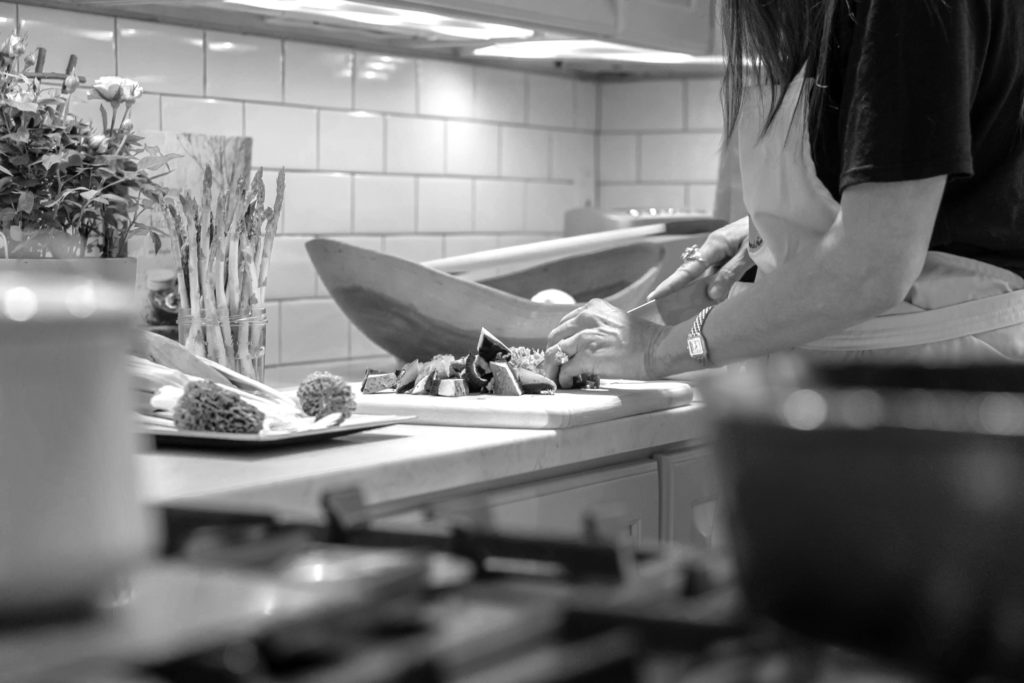 Driving Around and Around the Dead End: This one is a cousin to the “missing puzzle piece” above. It has a little bit less of a trying to solve it feeling, and a bit more of simply not being able to shut the mind off and so it goes round and round in an endless loop. For those in my generation who can remember the “broken record” it is like that — as if the brain is stuck in a groove that it can’t get out of, so it just keeps repeating itself over and over like a brain hiccup. There is a stuck-ness to this, and even for some a sense of feeling paralyzed or frozen by worry. Helpful Strategy: Instead of trying to escape what is here, try to feel into it. Turn toward it with some curiosity. Instead of focusing on the thoughts though, drop into the body and sense what emotions are present. Maybe there is sadness underneath the worry, maybe there is vulnerability, fear, or feelings of not being enough. Instead of trying to think one’s way out, ask yourself “what is here, and what does this sadness (or other emotion) need from me right now?” If we can accept and acknowledge the underlying feelings – if we can help these parts of ourselves feel seen and heard, something often beings to shift on its own, creating more space and more ease. The Horror Movie Goer: This one involves playing out worst-case scenarios over the over in one’s mind, as if it were possible to cope with something that hasn’t happened yet (and may never happen). This one can especially like to show up at night, keeping people awake. It was a favorite of mine, especially during the early parts of the pandemic.
Driving Around and Around the Dead End: This one is a cousin to the “missing puzzle piece” above. It has a little bit less of a trying to solve it feeling, and a bit more of simply not being able to shut the mind off and so it goes round and round in an endless loop. For those in my generation who can remember the “broken record” it is like that — as if the brain is stuck in a groove that it can’t get out of, so it just keeps repeating itself over and over like a brain hiccup. There is a stuck-ness to this, and even for some a sense of feeling paralyzed or frozen by worry. Helpful Strategy: Instead of trying to escape what is here, try to feel into it. Turn toward it with some curiosity. Instead of focusing on the thoughts though, drop into the body and sense what emotions are present. Maybe there is sadness underneath the worry, maybe there is vulnerability, fear, or feelings of not being enough. Instead of trying to think one’s way out, ask yourself “what is here, and what does this sadness (or other emotion) need from me right now?” If we can accept and acknowledge the underlying feelings – if we can help these parts of ourselves feel seen and heard, something often beings to shift on its own, creating more space and more ease. The Horror Movie Goer: This one involves playing out worst-case scenarios over the over in one’s mind, as if it were possible to cope with something that hasn’t happened yet (and may never happen). This one can especially like to show up at night, keeping people awake. It was a favorite of mine, especially during the early parts of the pandemic.
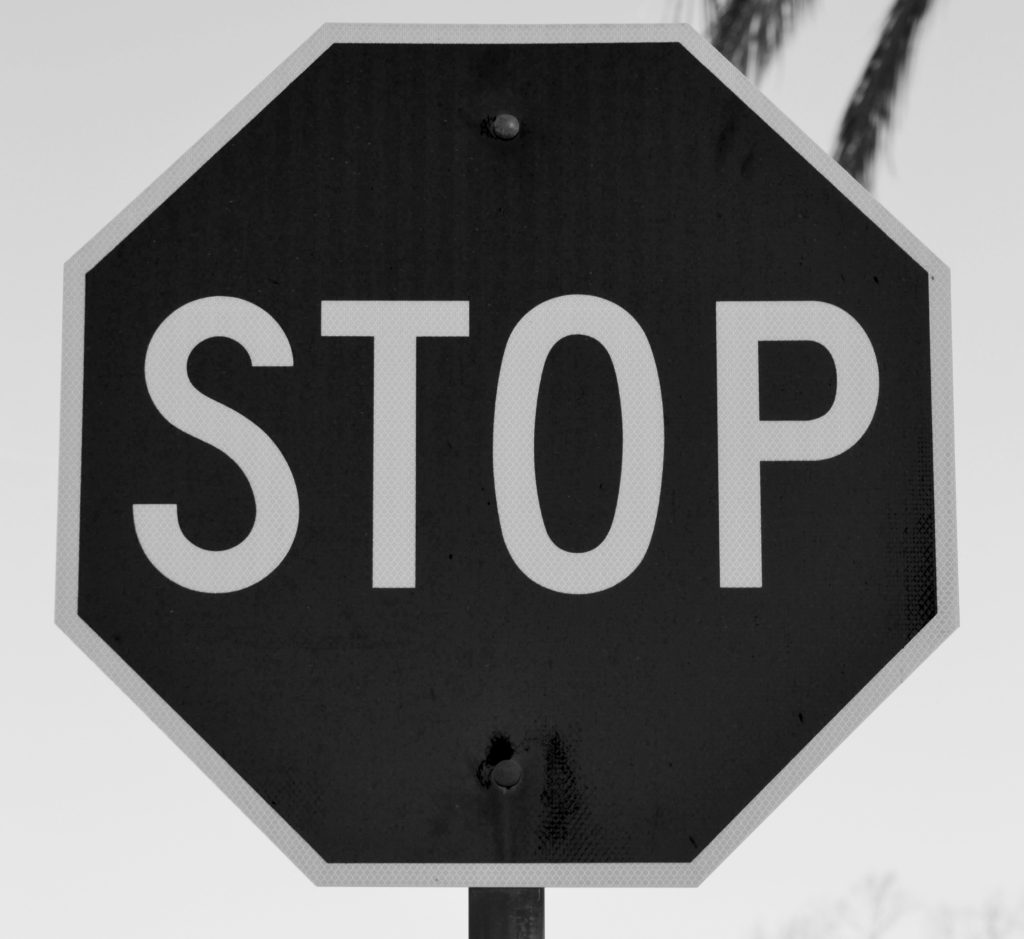 Helpful Strategies: – Step out of “what if” and step into “what is.” Picture a stop sign. Stop and ask “what is actually here right now, and can I be with this?” Name what is actually here right in this moment. Often it may be that you are in the comfort of your bed and nothing bad is actually happening in this very moment. Even if this moment may be difficult or challenging, focus on all of the resources you have to cope right now with what is here. For example, when I was driving to the ER not knowing if my husband would be OK, I focused on my wonderful support system of family and friends, the care and expertise of the doctors who were available to us, and on my meditation practice that grounds me. – If there is nothing “bad” actually happening in this moment, remember that you can choose to go into a different movie theater. Those worries are just mental constructs in your mind and nothing more. They are empty of substance. Remember that you can use your imagination to nourish yourself as much as to scare yourself. Create a new movie that is more nourishing. At night when my worries start to creep in, I like to picture myself in my safe and serene spot on the beach of a beautiful lake, surrounded by mountains, and amongst all of the spiritual teachers whose wisdom inspires and nourishes me. Create a movie that feels supportive for you – be creative and even playful with this. The Alarmist: With this variety of worry, the sympathetic nervous system goes into full blown activation and there is a very physiological experience of worry, in fight or flight fashion. Helpful Strategies: It can be most helpful with this kind of worry to focus on calming the nervous system. There is no one right way to do this. What is most important is that each person find what works best for them. Some helpful strategies can include: focusing on one’s breathing and in particular slowing down the exhalations to be longer than the inhalations; focusing on grounding practices such as bringing awareness to sensations of the feet on the ground, or the contact points of support underneath someone at the surfaces upon which they are resting; bringing awareness to any or all of the five senses and focusing on what one can see, hear, touch, etc.; putting one hand on the heart and one hand on the abdomen and offering words of care to oneself (e.g., “this is a moment of difficulty”). The Runaway Train: Sometimes the worrying mind can have a quality of a runaway train. We can get pulled away by mental ruminations — one worry thought leading to the next, leading to the next, often like dominoes falling with a kind of building momentum. We might start at point A, and within a matter of seconds or minutes, our mind can be at Z and beyond, even when these thoughts don’t make logical sense.
Helpful Strategies: – Step out of “what if” and step into “what is.” Picture a stop sign. Stop and ask “what is actually here right now, and can I be with this?” Name what is actually here right in this moment. Often it may be that you are in the comfort of your bed and nothing bad is actually happening in this very moment. Even if this moment may be difficult or challenging, focus on all of the resources you have to cope right now with what is here. For example, when I was driving to the ER not knowing if my husband would be OK, I focused on my wonderful support system of family and friends, the care and expertise of the doctors who were available to us, and on my meditation practice that grounds me. – If there is nothing “bad” actually happening in this moment, remember that you can choose to go into a different movie theater. Those worries are just mental constructs in your mind and nothing more. They are empty of substance. Remember that you can use your imagination to nourish yourself as much as to scare yourself. Create a new movie that is more nourishing. At night when my worries start to creep in, I like to picture myself in my safe and serene spot on the beach of a beautiful lake, surrounded by mountains, and amongst all of the spiritual teachers whose wisdom inspires and nourishes me. Create a movie that feels supportive for you – be creative and even playful with this. The Alarmist: With this variety of worry, the sympathetic nervous system goes into full blown activation and there is a very physiological experience of worry, in fight or flight fashion. Helpful Strategies: It can be most helpful with this kind of worry to focus on calming the nervous system. There is no one right way to do this. What is most important is that each person find what works best for them. Some helpful strategies can include: focusing on one’s breathing and in particular slowing down the exhalations to be longer than the inhalations; focusing on grounding practices such as bringing awareness to sensations of the feet on the ground, or the contact points of support underneath someone at the surfaces upon which they are resting; bringing awareness to any or all of the five senses and focusing on what one can see, hear, touch, etc.; putting one hand on the heart and one hand on the abdomen and offering words of care to oneself (e.g., “this is a moment of difficulty”). The Runaway Train: Sometimes the worrying mind can have a quality of a runaway train. We can get pulled away by mental ruminations — one worry thought leading to the next, leading to the next, often like dominoes falling with a kind of building momentum. We might start at point A, and within a matter of seconds or minutes, our mind can be at Z and beyond, even when these thoughts don’t make logical sense.  Mindful awareness and meditation practice can be very helpful here. First, you need to recognize that you are on the train. Once you see that, make the choice to step off the train at the very next stop, and watch this train, and the next, and next — as it passes by. Don’t worry about stopping the trains but try to observe them from the vantage point of solid ground. When we can observe our thoughts without getting hooked by them, when we can remember that our thoughts are just mental constructs and not absolute truth, this can help to stop the momentum of the worry thoughts in their tracks. With the challenges so many of us are facing in the world and in our personal lives, it is no wonder that many people are struggling with worries. If you are gripped by worries, you are not alone! But while having a worrying mind is part of our human condition, we are not helpless to our worries, and they don’t need to consume our lives. By remembering to “ACT” and by trying some of the strategies above, I hope you will find ways to experience greater ease and free up energy to engage in those things that you care most about.
Mindful awareness and meditation practice can be very helpful here. First, you need to recognize that you are on the train. Once you see that, make the choice to step off the train at the very next stop, and watch this train, and the next, and next — as it passes by. Don’t worry about stopping the trains but try to observe them from the vantage point of solid ground. When we can observe our thoughts without getting hooked by them, when we can remember that our thoughts are just mental constructs and not absolute truth, this can help to stop the momentum of the worry thoughts in their tracks. With the challenges so many of us are facing in the world and in our personal lives, it is no wonder that many people are struggling with worries. If you are gripped by worries, you are not alone! But while having a worrying mind is part of our human condition, we are not helpless to our worries, and they don’t need to consume our lives. By remembering to “ACT” and by trying some of the strategies above, I hope you will find ways to experience greater ease and free up energy to engage in those things that you care most about.
ABOUT THE AUTHOR
 Beth Kurland, Ph.D., is a clinical psychologist, Tedx speaker, and author of three award winning books: Dancing on The Tightrope: Transcending the Habits of Your Mind and Awakening to Your Fullest Life; The Transformative Power of Ten Minutes: An Eight Week Guide to Reducing Stress and Cultivating Well-Being and Gifts of the Rain Puddle: Poems, Meditations and Reflections for the Mindful Soul. Beth is passionate about teaching mindfulness informed practices and mind-body strategies to help people cultivate whole person health and well-being. She is excited to be teaching her online course The Well-Being Toolkit, and to offer online coaching services in addition to her therapy practice. Visit https://BethKurland.com to learn more. You can also find her free meditations on Insight Timer, and her blogs on Psychology Today
Beth Kurland, Ph.D., is a clinical psychologist, Tedx speaker, and author of three award winning books: Dancing on The Tightrope: Transcending the Habits of Your Mind and Awakening to Your Fullest Life; The Transformative Power of Ten Minutes: An Eight Week Guide to Reducing Stress and Cultivating Well-Being and Gifts of the Rain Puddle: Poems, Meditations and Reflections for the Mindful Soul. Beth is passionate about teaching mindfulness informed practices and mind-body strategies to help people cultivate whole person health and well-being. She is excited to be teaching her online course The Well-Being Toolkit, and to offer online coaching services in addition to her therapy practice. Visit https://BethKurland.com to learn more. You can also find her free meditations on Insight Timer, and her blogs on Psychology Today
Posted by mkeane on Thursday, August 4th, 2022 @ 12:36AM
Categories:
